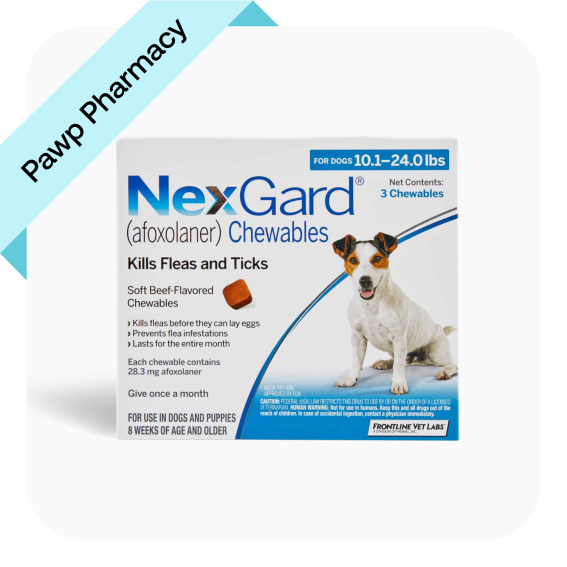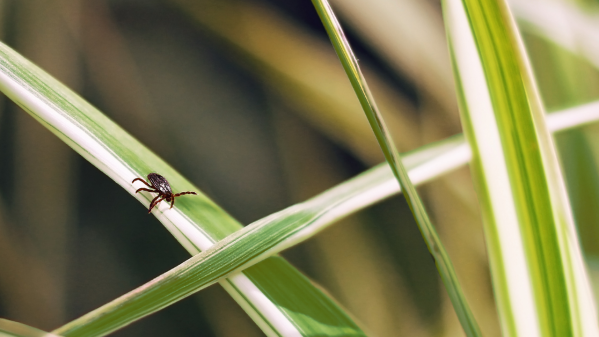Any pet parent knows that ticks are not something you want clinging to your dog or cat—or yourself for that matter.
Ticks bite both people and animals and spread disease by passing along viruses, bacteria, and other parasites.
Some may think that because ticks are commonly found in heavily wooded areas, those who live in urban areas or coastal towns are safe from these pesky pests.
Unfortunately, ticks are quite adaptable. City dwellers and beach goers are not free from these parasites.
So where do ticks live? Let's look at where these parasites are most commonly found and what you can do to avoid them.
Where do ticks live?
It's true that ticks tend to dwell in moist, wooded environments, however, that does not mean they don't live outside these areas.
It's also important to note that different species of ticks reside in different places. So while the blacklegged tick (Ixodes scapularis) typically populates only the eastern half of the United States, the brown dog tick (Rhipicephalus sanguineus) can be found all over the nation.
Ticks in the city
While this may sound like an insect-inspired spoof on an HBO sitcom, it's true that ticks are found in cities—even in concrete jungles like New York City.
So how are ticks able to take a bite out of The Big Apple? Well, there are a few factors at play here.
For one, deer populations have started infiltrating into cities, and with them comes the deer tick—a chief spreader of Lyme Disease. Ticks also lurk in city parks where they can hide from direct sunlight, and NYC has plenty of grassy knolls, shrubs, and shaded areas for them to camp out in.
This means that those who live in cities have an equal chance of getting a tick bite in city parks than those who live in suburban areas.
Read: 10 Best Dog Parks In New York City For Your Pup To Roam Free
Ticks at the beach
It's tough to think that while you're soaking up the sun, blood-thirsty ticks could be lurking nearby.
And while they're not likely to be in the sand underneath your towel, they're abundant in the brush and beach grass-covered dunes just feet away.
One recent research study found that contrary to popular belief, it's not just California's woodlands that are bustling with black-legged ticks—its beaches are full of them, too. Even more concerning, about 4 percent of the ticks identified were found to have the bacteria that causes Lyme Disease.
Ticks in wooded areas
The most commonly talked about tick-infested environment is wooded areas. Campers and hikers alike are constantly warned about the threat of tick bites and Lyme Disease.
Ticks thrive in moist, shaded areas, so tree and shrub-heavy environments are ripe for these disease-spreading bugs. And this includes your yard.
Ticks are everywhere
Unfortunately, the moral of the story here is that ticks are everywhere. So rather than hole up in your home in hopes to avoid these pesky parasites, it's best to take preventative measures and protect yourself, your family, and your pets.
How to prevent tick bites
While it's nearly impossible to avoid hanging out in tick-dwelling areas, there are some preventative steps you can take for both you and your pet that can minimize the chances of a tick bite or Lyme Disease.
Flea & tick preventative for pets
The best thing you can do for your pets is get them started on a safe, effective flea and tick preventative. There are a wide range of options on the market, but the best one will depend on your pet's weight, breed, behavior, and lifestyle.
It's best to get a recommendation from a trusted vet and ensure you're administering it correctly and on time.

NexGard Chewable, 10.1-24 lbs, (Blue Box), Rx$30
If you're a Pawp member you can purchase your flea and tick medication through the Pawp Pharmacy. You will already need to have a prescription.
Read: The Best Dog Flea & Tick Medications of 2022
Clothing
If you know you're going to be in an area prone to ticks, there are some smart clothing choices you can make to help deter and identify these critters.
Tuck shirts into pants and pants into socks
Keep your hair tied up or wear a hat
Wear light colored clothing to be able to identify ticks easier
Wear protective gear like gloves while gardening
Bug repellent
Permethrin products can be used to kill ticks on clothing (not skin), and bug repellent containing DEET, IR3535, picaridin, or PMD can be used to deter them. Do not use these products on animals.
Yard maintenance
While it's impossible to completely prevent ticks in your yard, there are things you can do to make it less hospitable to them.
Create a barrier of gravel or wood chips—ideally 3 feet wide—between lawns and wooded areas, as well as around play areas and patios
Trim tall grass surrounding the lawn
Mow the lawn frequently and clean up leaves and other debris in the yard
Keep play areas and gathering places away from trees and brush
Common tick misconceptions
For such tiny creatures, ticks sure get a lot of attention given their significant impact on the human and animal populations. But not everything you hear about ticks is true.
Dr. Jo Myers, DVM at Pawp is dispelling some common tick misconceptions:
Ticks do not drop out of trees onto unsuspecting hosts. They hang out at body-level and wait for a warm-blooded host to pass by and get ready to jump on once someone approaches. Once they jump onto a body, they walk across the surface of the skin to find a preferred location (around the waistband in humans and behind the ears or on the neck of a pet) before attaching and feeding.
Most tick bites are harmless. That being said, they're still nasty and prevention is worthwhile. Even though every tick bite leaves a yucky, crusty sore, the primary concern is the risk for transmission of a tickborne illness. This only happens when the biting tick carries the agent that causes disease, like the way the deer tick (Ixodes) can carry the bacterium (borellia burgdorferi) that causes Lyme disease. That doesn't happen with most bites, however. But since your pet can be exposed to hundreds or even a thousand tick bites over the course of a season, it's best to do all you can to minimize the chances for transmission of a tickborne illness by using a good tick treatment/preventive.
Ticks don’t instantly transmit disease. In order to transmit a tickborne illness, the tick has to be attached for a while. That means the best way to ensure your dog doesn't get a tickborne illness is to do a thorough tick check on him at the end of every day. It's extremely rare for a disease to be spread when a tick is attached for less than 24 hours.
Tick protection takes time. It's important to know what to expect from your tick protection. Tick products require a little bit of time to kill the tick after it bites your pet. Their repellent activity isn't 100% even when their ability to kill ticks is. So even if you're using a safe and effective, high-quality tick product on your pet, it's still normal to see an occasional tick embedded in your pet’s skin, especially if your pet is heavily exposed to ticks in your environment. That doesn't mean your product is not working. You can rest assured that the embedded tick is dead or dying.
A tick doesn’t stick its head into its host. Occasionally, pet parents mention this notion of pulling a tick out but leaving the head behind. That doesn't happen. A tick never actually sticks its head into the skin of its host. It has jaw parts that it inserts, but that's it. People tend to think they've left the head behind because any tick bite leaves a nasty, inflamed sore that usually has a black crater at the center. That black crater and irritated sore is NOT the tick's head that's been left behind. It's just a normal tick bite.
Got a tick problem?
If you're concerned that your pet has been exposed to a tick, the vet team at Pawp can help you understand the best course of action. In addition to providing guidance about treatment of tick bites, we can also help you choose the best flea & tick preventative to keep your pet healthy, happy, and pest free.
